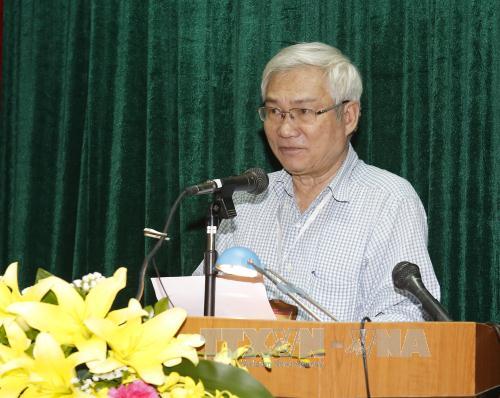The theoretical and factual values of President Ho Chi Minh’s work entitled “New life” in the current program on building new style rural areas and urban advancement were confirmed during a workshop held on May 9 th .
 |
| Prof. Dr. Mach Quang Thang from the Ho Chi Minh National Academy of Politics, addresses the workshop. (Photo: VNA) |
The workshop, held by the Ho Chi Minh National Academy of Politics, the Party Central Committee (PCC) Commission on Popularization and Education, the PCC Commission on Mass Mobilization and the Ministry of Agriculture and Rural Development, marked the 70 th year of the work, celebrated the 127 th birthday of President Ho Chi Minh (May 19 th ), and contributed to realizing resolutions and decrees issued by the central level.
Seventy years old, in March 1947, during the resistance war against the French colonist, President Ho Chi Minh wrote the work. Published in the same year, the work is divided into 19 parts, including nearly 5,800 words and presented in question-and-answer model. The work presents basic contents, from the purpose and contents of building new life for each group of people in specific environments, to the motto and methods in building new life.
Delegates during the workshop agreed that the contents of the work provide orientations for the building of urban areas in the context of market economy, as well as in developing humans in socialism. Being imbued with President Ho Chi Minh’s ideology and mastering the Party and State guidelines on sustainable poverty reduction and the building of new style rural areas and advanced urban areas, Party organizations, authorities, Fatherland Front and people need to work strictly together in effectively realizing the program on building new style rural areas and advanced urban areas, uniting to boost economic development, assisting each other in sustainably escaping poverty and increasing living standards.
According to the delegates, by studying the work, President Ho Chi Minh’s thoughts would be worked out, which can help overcome the weaknesses of the current program on building new style rural areas./.
Compiled by BTA